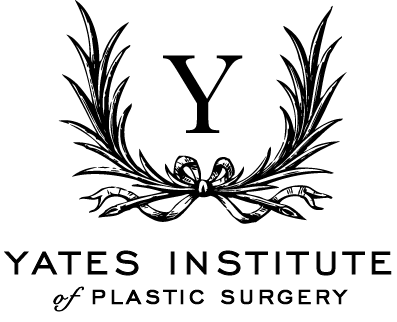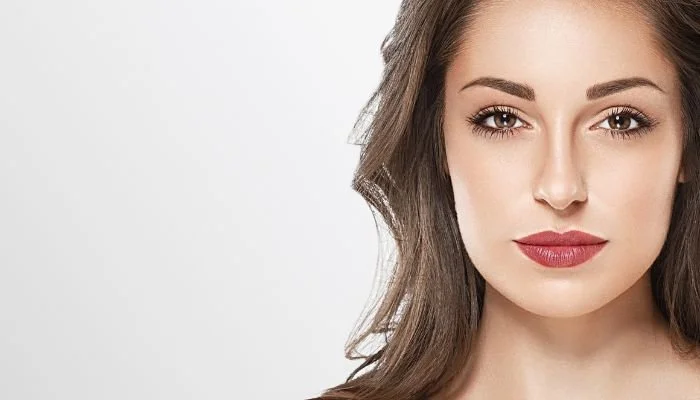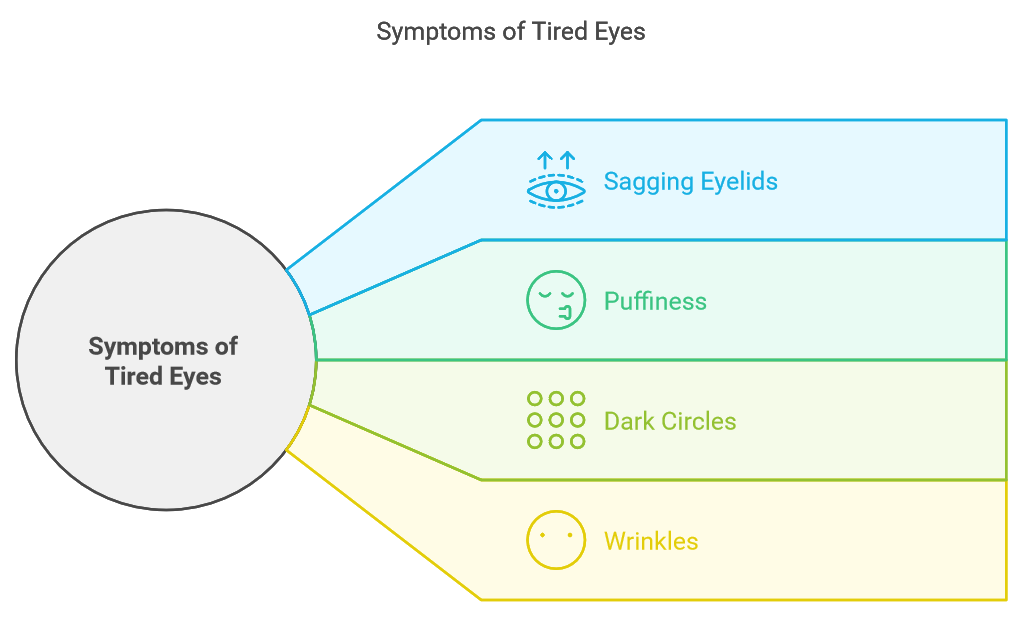Say Goodbye to Tired Eyes
How to Get Rid of Tired Eyes
At Yates Institute of Plastic Surgery in Fort Lauderdale, I've seen many patients who come to me with concerns about their tired-looking eyes. If you're reading this, chances are you've experienced the frustration of looking in the mirror and seeing eyes that don't reflect how vibrant and energetic you feel on the inside.
Tired eyes can have a considerable impact on your appearance and self-confidence. They can make you look older, stressed, and less approachable, even when you're well-rested and in good spirits. But the good news is that there are solutions available to help you rejuvenate your eye area and achieve a more youthful, refreshed appearance.
Symptoms of Tired Eyes
One of the most noticeable signs is sagging or drooping upper eyelids, which can make you look older and less alert. This excess skin can also make it difficult to apply eye makeup, as it may crease or smudge more easily.
Another common symptom is puffiness or bags under the eyes. This can be caused by a variety of factors, including aging, genetics, and lifestyle habits. Puffiness can make your eyes look swollen and tired, even if you've had a full night's rest.
Dark circles or hollows beneath the eyes are another telltale sign of tired eyes. These can be caused by a loss of volume in the area, leading to shadows that make you look exhausted or even ill. In some cases, dark circles may be due to hyperpigmentation, which can be exacerbated by factors like sun exposure and genetics.
Wrinkles or fine lines around the eyes, often referred to as "crow's feet," are another common symptom. These lines can be caused by a variety of factors, including aging, sun damage, and repeated facial expressions. While some people embrace their wrinkles as a sign of wisdom and experience, others may feel that they contribute to a tired, aged appearance.
If you've noticed any of these symptoms in yourself, you're not alone. Tired eyes are a common concern for many people, and there are treatment options available to help you achieve a more refreshed look.
Causes of Tired Eyes
One of the primary factors is aging. As we get older, our skin naturally loses elasticity and volume, which can lead to sagging, wrinkles, and hollows around the eyes. This is a normal part of the aging process, but it can be accelerated by factors like sun exposure, smoking, and poor skincare habits.
Another factor that can contribute to tired eyes is genetics. Some people are simply more prone to developing bags, dark circles, or sagging skin around the eyes due to hereditary factors. If you have a family history of tired eyes, you may be more likely to develop these symptoms yourself.
Lifestyle factors can also play a role in the appearance of tired eyes. One of the most common culprits is lack of sleep. When we don't get enough rest, it can show up in the form of dark circles, puffiness, and a general look of fatigue. Stress is another lifestyle factor that can contribute to tired eyes, as it can lead to tension and strain in the face and eyes.
Poor diet and dehydration can also take a toll on the appearance of your eyes. When we don't consume enough water or nutrients, it can show up in the form of dull, dry, or sunken skin around the eyes. Conversely, consuming too much salt, alcohol, or processed foods can lead to puffiness and bloating in the face and eyes.
At the same time, certain medical conditions can contribute to the appearance of tired eyes. Allergies, for example, can cause inflammation and puffiness around the eyes, while sinus problems can lead to dark circles and bags. Other health issues like thyroid disorders, dermatitis, and even certain medications can also affect the appearance of your eyes.
Non-Surgical Treatment Options for Tired Eyes
If you're looking to address tired eyes without undergoing surgery, there are several non-surgical treatment options available. One of the most accessible and affordable options is topical treatments, such as eye creams and serums.
When selecting an eye cream or serum, look for products that contain ingredients like retinol, vitamin C, or peptides. Retinol, a derivative of vitamin A, can help to stimulate collagen production and improve the texture and tone of the skin around the eyes. Vitamin C is a powerful antioxidant that can help to brighten the skin and reduce the appearance of dark circles. Peptides are short chains of amino acids that can help to firm and tighten the skin, reducing the appearance of fine lines and wrinkles.
When using topical treatments, it's important to be consistent and patient. Results may not be immediately visible, but with regular use over time, you may see a noticeable improvement in the appearance of your eyes.
Another non-surgical treatment option to consider is injectables. There are two main types of injectables that can be used to address tired eyes: dermal fillers and Botox.
Dermal fillers can be used to address volume loss around the eyes. As we age, we naturally lose fat and collagen in the face, which can lead to hollows and shadows around the eyes. By injecting small amounts of filler into these areas, we can restore volume and create a more youthful, refreshed appearance.
Botox, on the other hand, is used to address wrinkles and fine lines around the eyes. Botox works by temporarily paralyzing the muscles that cause these lines to form, resulting in a smoother, more relaxed appearance. Botox can be particularly effective for treating "crow's feet" and other dynamic wrinkles around the eyes.
Both dermal fillers and Botox are quick, relatively painless procedures that can be performed in a doctor's office. Results are typically visible within a few days to a week, and can last for several months to a year, depending on the specific product used.
Surgical Treatment Options for Tired Eyes
Surgical treatment options like blepharoplasty can provide long-lasting results for those wanting to get rid of tired eyes. Eyelid surgery is a surgical procedure that removes excess skin and fat, tightens muscles, and rejuvenates the eye area.
There are two main types of blepharoplasty: upper eyelid surgery and lower eyelid surgery. Upper eyelid surgery addresses concerns like sagging or drooping skin on the upper eyelids, which can make you look older and more tired. During the procedure, I will make a small incision in the natural crease of the eyelid, remove excess skin and fat, and tighten the muscles as needed. This can result in a more open, alert appearance and can even improve vision if the sagging skin was obstructing your line of sight.
Lower eyelid surgery, on the other hand, addresses concerns like puffiness, bags, and dark circles under the eyes. When this procedure is performed, I will make an incision either just below the lash line or inside the lower eyelid, depending on the specific concerns being addressed. Excess fat may be removed or redistributed, and the muscles may be tightened to create a smoother, more youthful appearance.
In some cases, a combination of both upper and lower eyelid surgery may be recommended to achieve the best possible results. This is something that we can discuss during your consultation.
So, who is an ideal candidate for blepharoplasty? In general, good candidates for eyelid surgery are healthy adults who have realistic expectations for the procedure. If you have excess skin or fat around your eyes that is causing you to look older or more tired than you feel, or if you have vision obstruction due to sagging upper eyelids, you may be a good candidate for blepharoplasty.
It's important to note that blepharoplasty is a surgical procedure, and as with any surgery, there are certain risks and potential complications involved. These can include bleeding, infection, adverse reactions to anesthesia, and temporary or permanent changes in vision. However, when performed by a qualified and experienced board-certified plastic surgeon, the risks of blepharoplasty are generally low.
Before undergoing blepharoplasty, we will need to have a consultation to discuss your medical history, your goals for the procedure, and any potential risks or complications. I’ll perform a physical examination of your eyes and eyelids to determine the best course of treatment for your individual needs.
During the procedure itself, you will be given either local or general anesthesia, depending on the extent of the surgery and your individual preferences. The surgery typically takes one to two hours, depending on whether you are having upper eyelid surgery, lower eyelid surgery, or both.
After the surgery, you can expect some swelling, bruising, and discomfort around your eyes. Me and my team will provide you with specific instructions for caring for your eyes during the recovery period, which may include using ice packs, taking pain medication, and avoiding certain activities like reading or watching television for a period of time.
Most people are able to return to work and other normal activities within one to two weeks after blepharoplasty, although it may take several weeks for the swelling and bruising to fully subside.
Overall, blepharoplasty can be an excellent option for those looking to rejuvenate their eye area and achieve a more youthful, refreshed appearance. If you're considering this procedure, schedule a consultation to discuss your options.
FAQs about How to Get Rid of Tired Eyes
Can makeup help to conceal tired eyes?
· Makeup can temporarily conceal some of the signs of tired eyes, such as dark circles or puffiness, but you should remember that it's not a long-term solution. Applying too much makeup or using products that are not suitable for your skin type can actually make the problem worse. If you do choose to use makeup to conceal tired eyes, look for products that are specifically formulated for the delicate skin around the eyes, and be sure to remove all makeup thoroughly before going to bed each night.
Can home remedies like cucumber slices or tea bags help to reduce puffiness and dark circles?
· Home remedies like placing chilled cucumber slices or tea bags on the eyes can provide temporary relief from puffiness and dark circles. The coolness of these items can help to constrict blood vessels and reduce swelling, while the caffeine in tea bags may help to improve circulation and reduce the appearance of dark circles. However, these remedies are not a substitute for a consistent skincare routine and healthy lifestyle habits.
Can certain eye conditions contribute to the appearance of tired eyes?
· Yes, eye conditions like ptosis (drooping eyelids), blepharitis (inflammation of the eyelids), or dry eye syndrome can contribute to the appearance of tired eyes.
Are there any lifestyle changes I can make to reduce the appearance of tired eyes?
· There are several lifestyle changes you can make to reduce the appearance of tired eyes and promote overall eye health. These include getting enough sleep (aim for seven to eight hours per night), staying hydrated by drinking plenty of water throughout the day, eating a balanced diet rich in fruits and vegetables, managing stress through techniques like meditation or deep breathing, and protecting your eyes from the sun by wearing sunglasses or a wide-brimmed hat when spending time outdoors. Additionally, if you smoke, quitting can help to reduce the appearance of wrinkles and other signs of aging around the eyes.
Further Reading about Blepharoplasty with Dr. Essie Yates
· Read more about Blepharoplasty vs. Brow Lift
· Read more about Timeline for Recovery after Blepharoplasty
· Read more about Risks associated with eyelid surgery and how to prevent them
· Read more about Who is a good candidate for eyelid surgery?
· Read more about What to expect after eyelid surgery
Medical References for Treatment for Tired Eyes
· Blepharoplasty: Anatomy, Planning, Techniques, and Safety
· Objective quantification of the impact of blepharoplasty on the superior visual field



